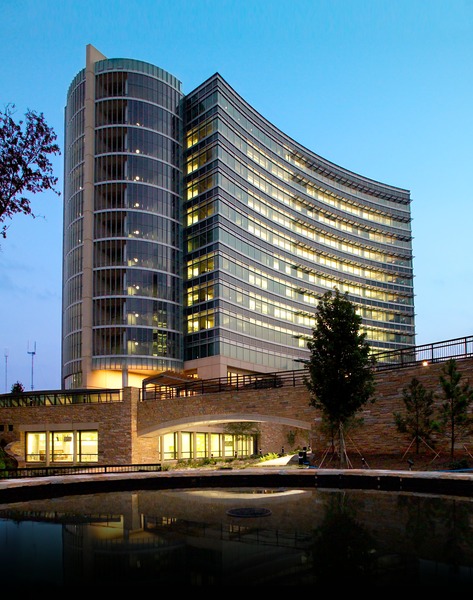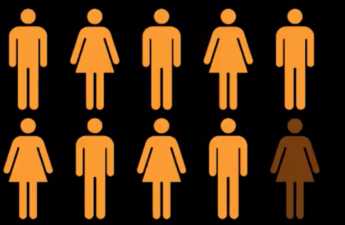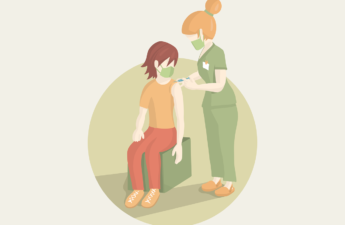
By: Christine Vestal & Michael Ollove, Stateline
As Dr. Mark Wilson prepared to release advice in July that middle schools and high schools in Birmingham, Alabama, should not open for in-person learning this fall, the U.S. Centers for Disease Control and Prevention changed its position and issued the opposite recommendation.
Wilson, chief health officer for Birmingham and the surrounding county, stuck to his at-home schooling decision, but now without support from what had long been regarded as the nation’s most esteemed public health authority.
Not only that, he said some of the vexed parents even cited the CDC in attacking his stand. It felt like the limb he was out on had been sawed off at the trunk.
“That guidance gave me one of the worst weeks of my life,” Wilson recalled in an interview with Stateline.
The agency’s revised advice came on the heels of President Donald Trump’s vigorous call for a full, face-to-face school reopening. But it conflicted with what Wilson and other public health officials knew were disturbing results from a credible South Korean study, which, contrary to popular belief, found that older children were a greater risk for transmitting the virus than younger children. That made reopening middle and high schools more problematic.
Since the pandemic began, a string of messages from the Trump administration, many lacking scientific evidence, have confounded the work of state and local public health authorities who have the already challenging job of convincing people to abide by restrictions that many find not only onerous but also economically punishing.
By early June, more than two dozen public health officials had resigned or been fired — some burned out, others vehemently attacked by elected officials, the public or both. Since then, the list of casualties has expanded to more than 50.
Now, as Election Day approaches, conflicting public health recommendations from the CDC along with less transparency with and communication to local public health officials is causing a growing number of them to ignore the agency and follow their own judgments.
As a consequence, the nation’s coronavirus public health guidelines vary widely across states. And health officials say conflicting recommendations from different public health agencies confuse the public and result in many ignoring guidance that could save their lives.
“The CDC is our national messenger on this topic and when they’re not strong, it adds to the already full plate of local health officials as they try to navigate through the pandemic,” said Adriane Casalotti, chief of government and public affairs at the National Association of County and City Health Officials.
“Public trust has really been eroded over time, and we’re seeing a lot of coronavirus fatigue,” she said. “When you add all this together, it’s not clear whether the public is making the safest choices about their health.”
City, state and county health officials have long relied on the CDC, a unit of the U.S. Department of Health and Human Services (HHS), to back them up when they ask the public to adopt sometimes difficult public health measures, invoking the agency’s name to quell public doubts.
In Birmingham, Wilson said, “It was an extremely sad day to see what looked like the CDC being compromised. One of our great institutions appeared to have lost its soul.”
During a Senate subcommittee hearing last week in which Democrats raised alarms about the politicization of federal health agencies by the White House, CDC Director Dr. Robert Redfield asserted that the agency adheres to science when giving public health guidance. He denied that the CDC had been influenced by political pressure.
“I am going to commit [that] we are going to continue to give Congress and the nation the best public health advice,” he testified. “We’re not going to let political influence try to modulate that.”
HHS, in response to a request for comment from Stateline, wrote in an email: “Under President Trump, HHS has always provided public health information based on sound science. Throughout the COVID-19 response, science and data have driven the decisions at HHS.”
The CDC did not respond to a similar request for comment by deadline.
Serial Contradictions
Local public health officials say the CDC also caved to political pressure and contradicted its previous advice when it announced in August that people exposed to someone infected with COVID-19 didn’t need to be tested.
That advice contradicted many epidemiologists’ assertion that it is essential to test asymptomatic carriers much more extensively. Researchers think they account for at least 40% of COVID-19 cases.
The guidance, which the CDC later tempered and has since withdrawn, baffled and outraged some public health authorities. Democratic governors in at least five states — California, Kentucky, New York, North Carolina and Washington state — promptly rejected it, as did multiple national medical experts.
“What they put out was contrary to science,” said Patty Hayes, director of public health for Seattle and King County. “We put out the statement that, in the state of Washington and King County, if you were exposed, you should get tested. We held firm to it.”
Last week, the CDC updated its website to include new information on how the coronavirus spreads. Previously, the website said it spread between people who are in close contact “through respiratory droplets produced when an infected person coughs, sneezes, or talks.” The change expanded the method of transmission to include “small particles, such as those in aerosols …”
Many research scientists said the update was in line with scientific evidence. But by Monday, the update had been removed.
The CDC’s webpage now reads: “A draft version of proposed changes to these recommendations was posted in error to the agency’s official website. CDC is currently updating its recommendations regarding airborne transmission.”
Less Transparent
Although local and state public health officials are quick to defend the dedication of the scientists at the CDC, they say that during the pandemic, the agency has behaved differently than it has in the past.
It has, for example, been far less transparent with local officials than they are used to, in some cases announcing decisions to the public before alerting public health authorities or explaining their reasoning to them.
That prompted the Association of State and Territorial Health Officials earlier this month to release a statement urging federal health officials to involve local and state health agencies in their decision-making.
“The failure to provide notice and pre-decisional consultation,” the statement said, “has a significant impact on our work to protect the health of the American public and in fostering an atmosphere of transparency, trust and confidence between public health officials and the communities they are working so hard to serve during this historic public health crisis.”
Pointedly, the statement also said federal health guidance should be based on what’s “in the best interests of the public’s health and not political expediency.”
Dr. Rachel Levine, president of the association and Pennsylvania’s secretary of health, cited a recent example of what she called the federal government’s lack of transparency.
HHS announced in July that it was shipping hundreds of thousands of rapid antigen tests to nursing homes, she said, but had not consulted states about how they would be distributed or where test results should be recorded.
“We have a perspective from each state that is valuable and should be considered as decisions are made,” Levine said. “We all need to work together.”
Since the public health association’s Sept. 2 statement, Levine said the cabinet-level agency has been more responsive.
Dr. Umair Shah, an emergency room physician and executive director of the Harris County, Texas, public health authority, agreed that the CDC and other federal health agencies have been far less communicative with local authorities than he was used to.
“The CDC in the past made more effort to keep local and state health officials informed and coordinated,” he said. “It has not happened during this pandemic.”
Shah said messaging from Washington, including the president’s antipathy toward masks, continued shutdowns and extensive testing, has seriously undercut local efforts.
When people see different levels of government disagreeing over public health measures, he said, “Generally they choose to go down the less restrictive avenue, putting their health at risk. The disagreements engender confusion and complacency, and that’s where people get in trouble. It makes it harder for those of us at the local public health level to get people to follow our guidelines.”
Politicizing Science
In Birmingham, it wasn’t just the school reopening issue that prompted harsh criticism of Wilson. People also were angry about his early call to close businesses and stop large gatherings.
“Some of the worst pushback I got,” he said, “was from a silly face mask order, a minor inconvenience to help us care for each other here in the Bible Belt where people have always cared for each other. You would have thought I had committed treason by ordering that.”
Local politicians have publicly criticized him, he said, while privately telling him he was doing the right thing.
Public health officers say they are used to opposition to their recommendations. During the early years of the HIV/AIDS epidemic, public health authorities frequently faced backlash against programs to provide clean needles and free condoms. Anti-smoking measures and seat belts at first drew resistance, as more recently have restrictions on vaping.
“Political interference in public health is not new. It’s just more open and more brash and less thoughtful than it’s ever been,” said Dr. Georges Benjamin, executive director of the American Public Health Association.
Many local public health officials agree they have never seen the intensity of anger against them from the general public that they have experienced during COVID-19.
“The political challenges are not like anything else we’ve ever seen,” said Baltimore’s health commissioner Dr. Letitia Dzirasa, a pediatrician.
But local health officials say the CDC can regain public trust.
“I really believe in the CDC,” said Hayes of King County, Washington. “There are just tremendous resources there. I have seen a couple attempts that were so egregious to undermine the CDC, I just hope we can come out of this and reset the dial so the CDC is seen again as a resource for not only us in the United States but in the rest of the world as well.”
Many public health officials say the CDC has the potential to earn back its former level of trust if it renews its earlier practice of providing clear, consistent and transparent science-based recommendations.
Dr. Jeff Engel, senior advisor at the Council of State and Territorial Epidemiologists, said the next opportunity to do that will be during the development and distribution of new COVID-19 vaccines.
“If all levels of government are transparent, communicate well and disclose all safety concerns of the vaccines, trust can be re-earned in the coming year,” he said.


